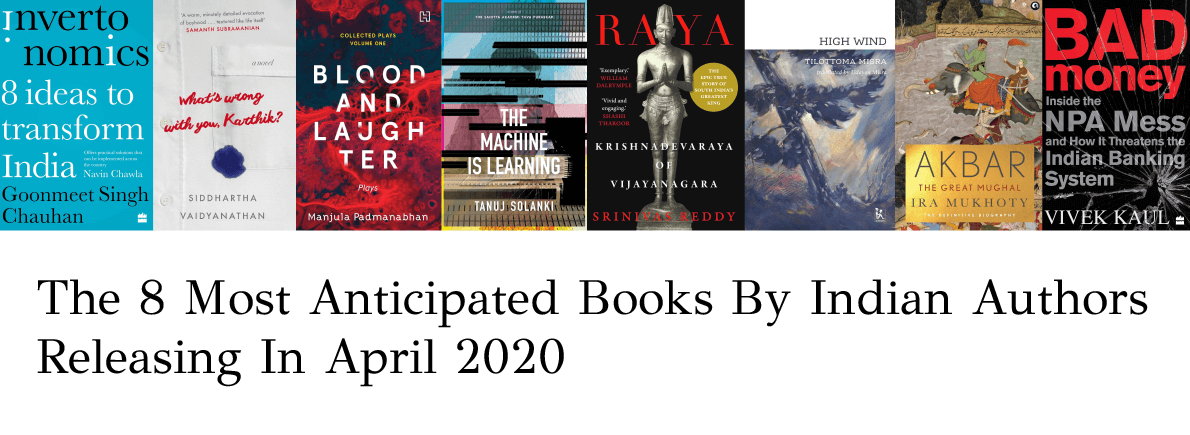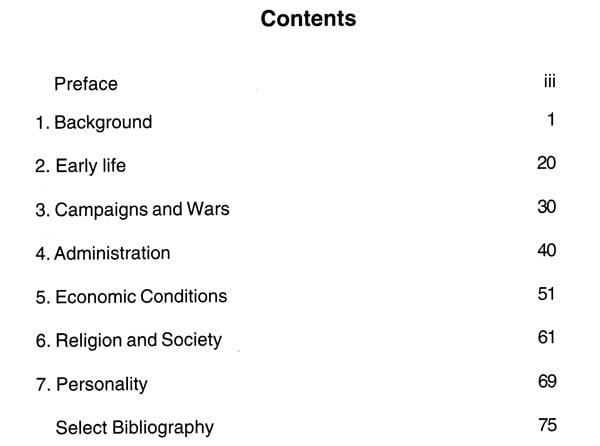- The book ‘The Road Ahead’ is written by Bill Gates 118. The political treatise of ‘Amuktamalyamada’ was written by Krishnadevaraya 119. ‘Freedom in Exile’ is the book written by Dalai Lama 120. Who wrote the book ‘The Insider’ Narasimha Rao 121. Which Indian scientist’s autobiography is titled as ‘Wings of Fire’.
- Saint Andal (14th Century, Madurai), at the Los Angeles County Museum of Art Amuktamalyada (Telugu: ఆముక్తమాల్యద) is an epic poem in Telugu composed by Krishnadevaraya of the Vijayanagar.
The first book which has given some historical inputs of krishnadevaraya but I still feel that lot of evidence of TRADE and COMMERCE has not been captured. I have visited Hampi N number of times and every time a new history is unearthed. Reddy to do more research on trade and commerce. Infact he should write a sequel about it.
Sri Krishna Deva Raya Biography
The Vijaynagar Kingdom rose to its highest peak of glory during the reign of Krishna Deva Raya. Not only he was an able administrator and a great warrior but he was also a scholar, a poet, a musician and a kind king. He was loved very much by his subjects and he even treated his enemies with honor.He won all the wars he had waged during his rule.
Krishna Deva was the younger brother of Vira Narasimha who defeated the Sulvas to snatch the
throne. Krishna Deva succeeded his brother and soon proved his mettle as an able king. He won all the wars he fought and expanded his kingdom. He defeated the king of Orissa and also the Sultan of Bijapur. He defeated the Bahamani ruler Ismail Adil Shah to put an end to the Muslim dominance in
Southern India. His empire extended from Cuttack in eastern India to Goa in the west and Raichur Dobe in the north to the Indian Ocean in the south.
During Krishna Deva’s reign the European ( mainly the Portuguese ) traders came to India and he encouraged foreign trade with the visitors. Krishna Deva was a great patron of art, poetry and music. Tenali Ramakrishna – the scholar who was famous for his wisdom, was a prominent member of Krishna Deva’s court. He built the famous Vithalswami and Hazara temple in Hampi. These temples and many other more are magnificent specimens of the Vijaynagar style of Hindu architecture.
Facts and Information about Sri Krishna Deva Raya
| Also known as | Sri Krishna Deva Raya |
| Reign | 1509-1529 |
| Born | 17 January 1471 |
| Birthplace | Hampi, Karnataka |
| Died | 1529 |
| Buried | Hampi, Karnataka |
| Predecessor | Viranarasimha Raya |
| Successor | Achyuta Deva Raya |
| Consorts | Chinna Devi, Tirumala Devi, Annapurna Devi |
| Dynasty | Tuluva Dynasty |
| Father | Tuluva Narasa Nayaka (the chieftain of Bunts) |
| Religious beliefs | Hinduism |
| Son | Tirumala Raya |
| Foreign affairs | The Bahamani Sultans, the Gajapatis of Odisha and the Portuguese were his main enemies. |
| Success in Deccan | Krishna Deva Raya’s forces and the Sultan of Bijapur clashed in 1509. Yusuf Adil Khan was killed and the Sultan Mahmud was defeated. |
| War with Feudatories | Krishna Deva Raya conquered the feudatory of Gajapati kings of Odisha. He defeated Ganga Raja on the Kaveri banks. |
| Relations with the Portuguese | Krishna Deva Raya and the Portuguese shared cordial relations. The Portuguese Dominion of India was set up in 1510 in Goa. Arabian horses and guns were supplied to the emperor by Portuguese merchants. |
| Son’s Death | Tirumala Raya, his son was made the Yuvaraja in 1524. However he could not serve for long because of his death due to poisoning. |
| Art and literature | Literature in many languages prospered during the rule of Krishna Deva Raya; thus, his reign is also called as a golden age of Telugu literature. Several Sanskrit, Telugu, Tamil and Kannada poets were patronized by the king. Astadiggajalu, the great eight poets, were part of his court. |
| Kannada literature | He patronised Kannada poets Mallanarya, Chatu Vittal-anatha and Timmanna Kavi. |
| Honouring the poets | Allasani Peddana was entitled Andhra Kavita Pitamaha by the king, which meant “father of Telugu poetry”. One of his popular writing is Manu-charitramu. |
| Sanskrit literature | Vyasatirtha, a Sanskrit poet, wrote Tat-parya-chandrika, Bhedo-jjivana, Nyaya-mrita and Tarka-tandava. Krishna Deva Raya was himself a scholar. Charita, Madalasa, Rasamanjari and Satyavadu Parinaya have been written by him. |
| Religion and culture | All sects of Hinduism were respected by Krishna Deva Raya. |
Related
| Author | Krishnadevaraya |
|---|---|
| Country | India |
| Language | Telugu |
| Genre | Epic poetry |
Publication date | 1509–1530 |
Amuktamalyada (Telugu: ఆముక్తమాల్యద) is a Telugu epic poem composed by Krishnadevaraya, the Vijayanagara Emperor in the early 16th century. Amuktamalyada translates to A garland of pearls. Considered as a masterpiece, Amuktamalyada describes the story of wedding of the Hindu Lord Ranganayaka an avatar of Vishnu and Goda Devi aka Andal the TamilAlvar poet and daughter of Periyalvar, at Srirangam.[1]

Krishnadevaraya[edit]
Krishnadevaraya was the king of the Vijayanagara Empire reigning between 1509–1530.[2] He was the third ruler of the Tuluva Dynasty, and presided over the Vijayanagara empire at its zenith. Krishna Deva Raya earned the titles of Kannada Rajya Rama Ramana (lit, 'Lord of the Kannada empire'), Andhra Bhoja and Mooru Rayara Ganda (lit, 'King of three Kings'). He became the dominant ruler of the peninsula of India by defeating the Sultans of Bijapur, Golconda, the Bahmani Sultanate and the Gajapati Kingdom of Orissa.[3]
Krishnadevaraya during his reign patronised many Telugu, Kannada, Tamil and Sanskrit poets. His court had 8 Telugu poets (Astadiggajalu) - Allasani Peddana, Nandi Thimmana, Madayyagari Mallana, Dhurjati, Ayyala-raju Rama-Bhadrudu, Pingali Surana, Ramaraja Bhushanudu and Tenali Rama Krishna. The Kannada poets Mallanarya who wrote Bhava-chinta-ratna and Satyendra Chola-kathe and Chatu Vittal-anatha who wrote Bhagavata also enjoyed his patronage. The Tamil poet Haridasa and Tamil literature were patronised by Krishnadevaraya. The Sanskrit poet Vyasatirtha who wrote Bhedo-jjivana, Tat-parya-chandrika, Nyaya-mrita (a work directed against Advaita philosophy) and Tarka-tandava enjoyed his patronage. Krishnadevaraya was himself an accomplished Sanskrit scholar and wrote Madalasa Charita, Satyavadu Parinaya and Rasamanjari and Jambavati Kalyana[4][5]

Andal[edit]
Andal is the only female among the 12 Vaishnava Tamil saints - the Alvars. According to tradition, Andal was born in Srivilliputtur. She was found as an infant, abandoned under a basil (Tulasi - Ocimum tenuiflorum) tree, by Vishnucitta (or Periyalvar) who himself was an Alvar poet. It is said that Periyalvar recocognised the child as Bhudevi, the consort of Vishnu (p. 36).[6][7] Active in the 7th-century,[8][9][10][11] Andal is credited with the Tamil works, Thiruppavai and Nachiar Tirumozhi, which are still recited by devotees during the winter festival season of Margazhi. Andal is known for her unwavering devotion to Lord Vishnu, the God of the Srivaishnavas. The Srivilliputhur Temple in Tamil Nadu is dedicated to her, marking her birthplace.[12]
Some of Andal's verses express love for Lord Vishnu, written with bold sensuality and startlingly savage longing, hunger and inquiry, that even today many of her most erotic poems are rarely rendered publicly.[13][14][15]
Krishnadevaraya's Amuktamalyada[edit]
It is believed that Krishnadevaraya wrote the work, after getting a dream in the portico of the Srikakula Andhra Maha Vishnu temple, in Srikakulam Village (todays krishna District) on the banks of river Krishna, in which Lord Andhra Maha Vishnu appeared and instructed him to write the story of his wedding to Andal at Srirangam in Telugu.In his dream, on being asked why Telugu was chosen, Lord Vishnu is said to have replied
తెలుఁగ దేల యెన్న దేశంబు దెలుఁగేను
తెలుఁగు వల్లభుండఁ తెలుఁగొకండ
యెల్ల నృపులు గొలువ నెరుఁగవే బాసాడి
దేశభాషలందుఁ తెలుఁగు లెస్స
Teluga dēla yenna dēśambu delugēnu
telugu vallabhuṇḍa telugokaṇḍa
yella nr̥pulu goluva nerugavē bāsāḍi
dēśabhāṣalandu telugu les'sa
Which translates to: 'If you ask, 'Why Telugu?' It is because this is Telugu country and I am a Telugu king. Telugu is sweet. After speaking with all the kings that serve you, didn’t you realize - amongst all the languages in the country, Telugu is the best!'
Amuktamalyada describes pain of separation (viraha) experienced by Andal, who is described as the incarnate of Lakshmi the consort of Vishnu. Further the poem describes Andal’s beauty in 30 verses written in the keśādi-pādam style, starting from her hair, going down her body till her feet.[16][17][18] This book has been translated into Marathi and Hindi by Vyankatesh Devanpalli.[19]
Name The Book Written By Krishnadevaraya In Sanskrit
References[edit]
Book Written By Krishnadevaraya In Sanskrit
- ^Rao, Pappu Venugopala (22 June 2010). 'A masterpiece in Telugu literature' (Chennai). The Hindu. Retrieved 9 June 2016.
- ^Sen, Sailendra (15 March 2013). A Textbook of Medieval Indian History. Primus Books. p. 288. ISBN978-9380607344.
- ^Ray, Bharati (2009). Different Types of History. Pearson Education India. p. 424. ISBN978-8131718186. Retrieved 14 June 2016.
- ^Kamath, Suryanath U (1980). A concise history of Karnataka: From pre-historic times to the present. Archana Prakashana. p. 324.
- ^Sastri, K A Nilakanta (1955). A History of South India: From Prehistoric Times to the Fall of Vijayanagar(PDF). Madras: Oxford University Press. pp. 331–354. Archived from the original(PDF) on 14 August 2016. Retrieved 14 June 2016.
- ^Jones, Constance; Ryan, James D (2006). Encyclopedia of Hinduism. Infobase Publishing. p. 593. ISBN9780816075645. Retrieved 18 June 2016.
- ^Ramaswamy, Vijaya (22 May 2007). Historical Dictionary of the Tamils. Scarecrow Press. p. 448. ISBN9780810864450. Retrieved 18 June 2016.
- ^Bryant, Edwin Francis (2007). Krishna: A Sourcebook. Oxford University Press. p. 188. ISBN978-0-19-803400-1.
- ^Chitnis, Krishnaji Nageshrao (2003). Medieval Indian History. Atlantic Publishers & Dist. p. 116. ISBN978-81-7156-062-2.
- ^S. M. Srinivasa Chari (1 January 1997). Philosophy and Theistic Mysticism of the Āl̲vārs. Motilal Banarsidass. pp. 11–12. ISBN978-81-208-1342-7.
- ^Greg Bailey; Ian Kesarcodi-Watson (1992). Bhakti Studies. Sterling Publishers. ISBN978-81-207-0835-8.
- ^Kumararacharya, V S Sampath. Musings on Saint Andal's Tiruppavai (A garland of Thirty Multifaceted Mystic Verses). Krishnamurthipuram, Mysore: D V K Murthy. Retrieved 14 June 2016.
- ^Dalrymple, William (10 July 2015). 'In search of Tamil Nadu's poet-preachers' (London). Financial Times. The Financial Times Limited. Retrieved 13 July 2015.
- ^Chakravarty, Uma (1989). 'The World of the Bhaktin in South Indian Traditions - The Body and Beyond'(PDF). Manushi. 50-51-52: 25. Retrieved 18 September 2015.
- ^Rajarajan, R K K (2015). 'Art and Literature: Inseparable Links'. The Quarterly Journal of the Mythic Society. 106 (4): 53–61. Retrieved 28 April 2017.
- ^Krishnadevaraya (2010). Reddy, Srinivas (ed.). Giver of the Worn Garland: Krishnadevaraya's Amuktamalyada. Penguin UK. ISBN978-8184753059. Retrieved 9 June 2016.
- ^Krishnadevaraya (1907). Amuktamalyada. London: Telugu Collection for the British Library. Retrieved 9 June 2016.
- ^Nandakumar, Prema. 'Verses from Amukta Malyada Translated'. Muse India. Archived from the original on 8 August 2016. Retrieved 14 June 2016.
- ^Devanpalli, Vyankatesh (2018). Amuktamalyada Srikrishnadevaraya. New Delhi: Educreation Publishing. ISBN9781545711835.

